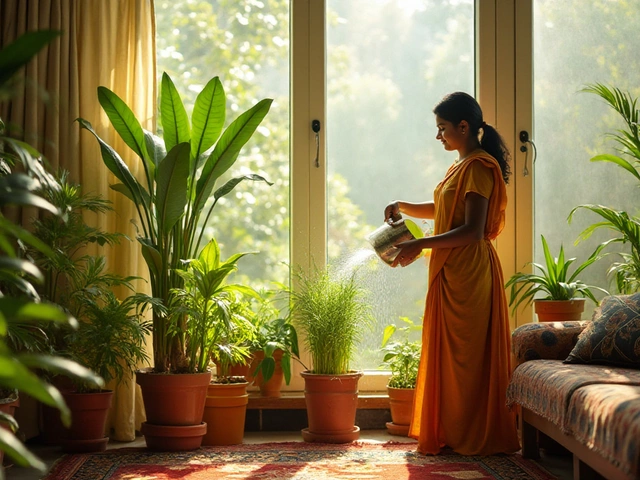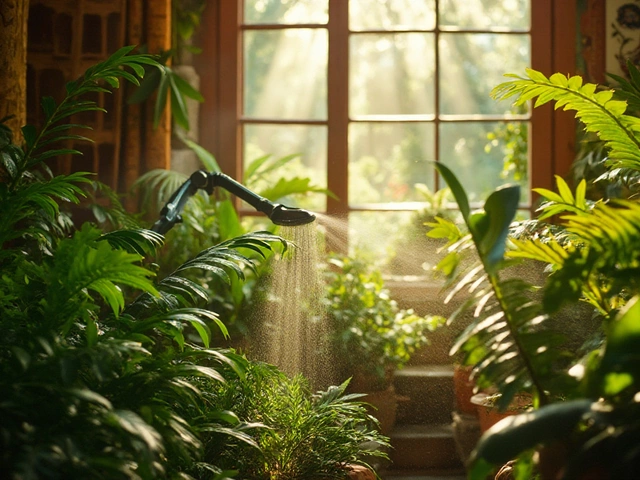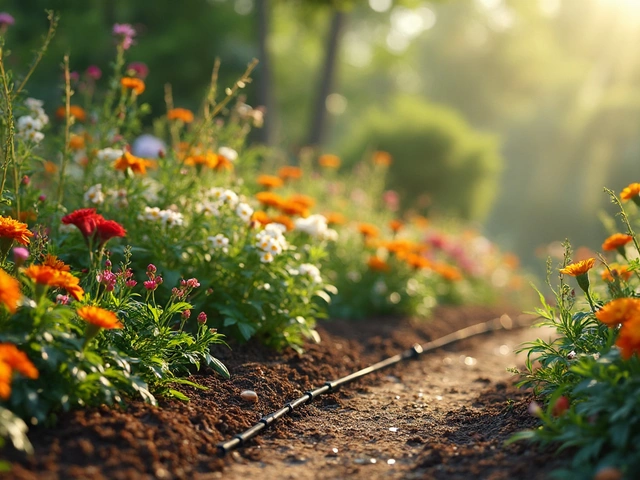Grow Lotus at Home: Simple Guide to a Beautiful Water Garden
If you’ve ever admired a lotus blossom at a park, you can bring that magic to your balcony or backyard. Growing lotus isn’t mystical – it just needs the right container, soil, and water. Below are practical steps that work for beginners and seasoned gardeners alike.
Choosing the Right Container and Soil
Start with a wide, shallow container that can hold at least 12‑15 cm of water when filled. Plastic tubs, large buckets, or even old bathtubs work well. Make sure there’s a drainage hole covered with fine mesh to keep soil from washing out.
For soil, use a mix of clay‑loam and garden compost in a 2:1 ratio. Avoid heavy potting mixes with too much peat – lotus prefers a dense, nutrient‑rich medium. Fill the pot about two‑thirds full, leaving space for the rhizome to sit just above the bottom.
Planting the Lotus Rhizome
Buy a healthy lotus rhizome from a reputable supplier. Look for a rhizome that has a few small shoot buds and no signs of rot. Gently press the rhizome into the soil so the buds face upward. Cover it with a thin layer of soil and add water until it reaches the top of the container.
Lotus likes warm water, ideally 24‑30 °C. In cooler climates, keep the pot in a sunny spot or use a small aquarium heater. Once the water temperature stabilizes, you’ll see shoots pushing through the surface within a week.
Sunlight is crucial – lotus needs at least 6 hours of direct light each day. If you’re placing the pot indoors, a south‑facing window or grow lights will do the trick. Outdoor setups near a pond or pool are perfect, as long as the water doesn’t get too cold.
Fertilize once the leaves are fully opened. Use a low‑nitrogen, high‑phosphorus lotus fertilizer or a balanced liquid fertilizer diluted to half strength. Apply every 2‑3 weeks during the growing season. Over‑fertilizing can cause algae growth, so stick to the recommended amount.
Maintaining Water Quality and Preventing Pests
Change about 25 % of the water every two weeks. This keeps the water clear and reduces the risk of fungal problems. If you notice floating leaves turning yellow, it may be a sign of nutrient imbalance – adjust feeding and water changes accordingly.
Common pests include aphids and spider mites. A gentle spray of neem oil or insecticidal soap works without harming the lotus. Avoid chemical pesticides; they can damage the delicate flowers and polluters.
When temperatures drop below 15 °C, move the pot to a sheltered indoor spot or cover it with a frost cloth. Lotus can survive mild winter dormancy if the rhizomes stay moist. In extreme cold, you can dig out the rhizomes, store them in a cool, dry place, and replant in spring.
Harvesting seeds is optional but rewarding. Let a flower fade naturally; the seed pod will turn brown and split open. Collect the seeds, rinse them, and store in a paper bag for next season’s planting.
With these steps, growing lotus at home becomes a fun and low‑maintenance project. You’ll enjoy large, fragrant blossoms that float majestically on the water, and you’ll have a stunning focal point for any garden space.
Is It Safe to Grow Lotus at Home? Risks, Benefits, and Essential Tips
Thinking about growing lotus at home? Get the facts on risks, safety, plant care tips, and common surprises about these stunning aquatic beauties for your indoor or outdoor pond.
About
Home and Garden
Latest Posts


Make a Large Yard Feel Cozy: Terrace Gardening Tips That Work
By Alden Thorne Jun 17, 2025

Essential Guide: Indoor Plants That Thrive with Misting
By Alden Thorne Jan 20, 2025

Drip Irrigation Under Mulch: Is It Worth It?
By Alden Thorne Apr 4, 2025

